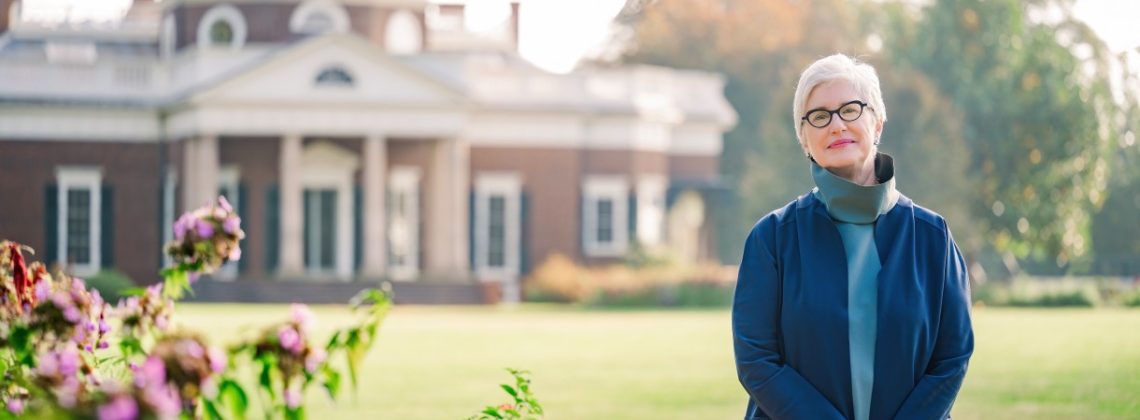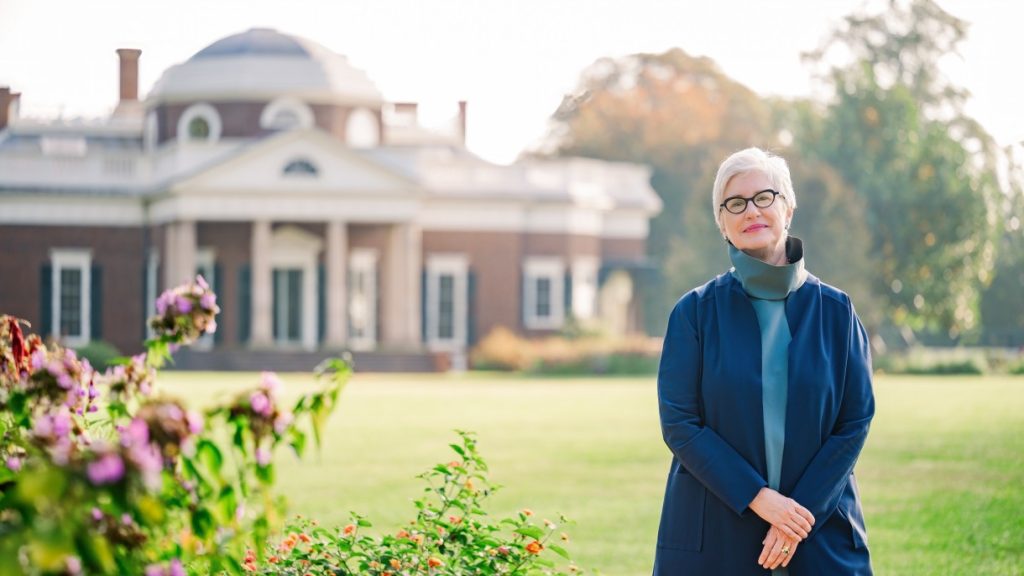

Last October, we noted that historian Jane Kamensky will be the new president of Thomas Jefferson’s Monticello. In a recent interview with the American Historical Association, Kamensky reflects on her role at Monticello in light of the 250th commemoration of the nation’s founding in 2026. Here is a taste:
What role do you imagine Monticello playing in the lead-up to and commemoration of the 250th?
Monticello means to use the opportunity of the semiquincentennial to hold courageous conversations that look to the past to understand a vexed present and anticipate a more perfect future. We will continue to recover the lifeworlds of all the people of the mountaintop—Black, Euro-American, and Native—and to think about American history as a chorus of voices, sometimes dissonant, as well as the soaring song of rare intellectuals like Jefferson. We also need to collaborate with a wide range of partners within and beyond Virginia to do the hard work of public history: looking honestly at where we’ve been, learning across our differences, finding the way forward. That’s slow, patient work, the work of generations. But the semiquincentennial is a great tent pole to hang it on.
You have spent much of your career teaching undergraduate and graduate students. Many Perspectives readers might wonder: Will you miss the university classroom? What do you look forward to in educating the public in a different venue?
I was lucky to teach extraordinary students for three decades, first at Brandeis University and last at Harvard. I won’t lose what I’ve learned from that privilege, nor will I lose treasured ties to those amazing young people. I see this new role as teaching in a different form and context—one from which I have as much wisdom to learn as I do to impart. I’m especially excited to work with a broad range of site-based educators, from frontline interpreters to our remarkable staff of civic educators, librarians, archaeologists, horticulturalists, curators, and more.
What opportunities and challenges does Monticello offer for teaching hard histories about the American past?
Monticello was Jefferson’s laboratory, continually renovated and revised. It was the nursery of the ideas that inspired the Declaration of Independence. It was also a large-scale plantation, enslaving hundreds of men, women, and children over generations. The place crystallizes the highest aspirations of our constitutional democracy and our deepest and most persistent national challenges. It’s a perfect emblem for the work behind us, in front of us, and ahead of us.
Preserving the histories of those enslaved families and their descendants is the impetus behind a major oral history initiative at Monticello. What roles do descendant communities play in knowledge production at the site?
Monticello has been seeking to recover enslaved lifeways and voices for decades. Archaeologists began excavating the material worlds of Black Monticello in the late 1980s; the Getting Word African American Oral History Project launched in 1993 to preserve the knowledge of people enslaved at Monticello and their descendants. Over 30 years, the oral history program has grown in amazing ways, most recently under the auspices of a multimillion-dollar grant from the Andrew W. Mellon Foundation and under the leadership of Getting Word director Andrew Davenport. Those funds will allow more interviews to be conducted, as well as the readying of transcripts, audio, and video for a wide range of researchers.
I met numerous descendants at the centennial celebrations of the Thomas Jefferson Foundation last November in New York. Their passion for living history is inspiring, as is their commitment to Monticello as a site of inquiry, healing, and even joy. Ascendant, an exciting program held last summer, offers thrilling testimony to this powerful and ongoing work. Getting Word emphasizes one of the core truths of American history: we are all, every day, the nation’s founders. We all make and are made by history.
Monticello, like many historic sites, offers a range of sources by which to access that history, ranging from the Getting Word oral histories to its landscape and archaeological evidence to its built environment, furnishings, and documents. In what ways does this multiplicity of sources shape how people learn history at Monticello?
The breadth of that source base is one of the key attractions of the site for our mission-driven staff and for hundreds of thousands of curious visitors every year as well. My colleagues speak often about the power of place: the ways learning clicks when it’s tied to a situated, shared, and sensory experience. The power of place offers a grounding to appreciate complexity. People come for the beauty and are caught up short by the horror of enslavement. People come to learn the history of enslavement and are caught up short by the beauty. In a world of no/but, Monticello demands a both/and approach. The breadth of Monticello’s source base also echoes the breadth of Thomas Jefferson’s own commitments: to architecture and learning, to liberty in the midst of slavery, to the American West and to Europe. So many pasts and futures reside in his biography as well as in the variegated primary sources that even a casual visitor to the mountaintop encounters.
Read the entire interview here.